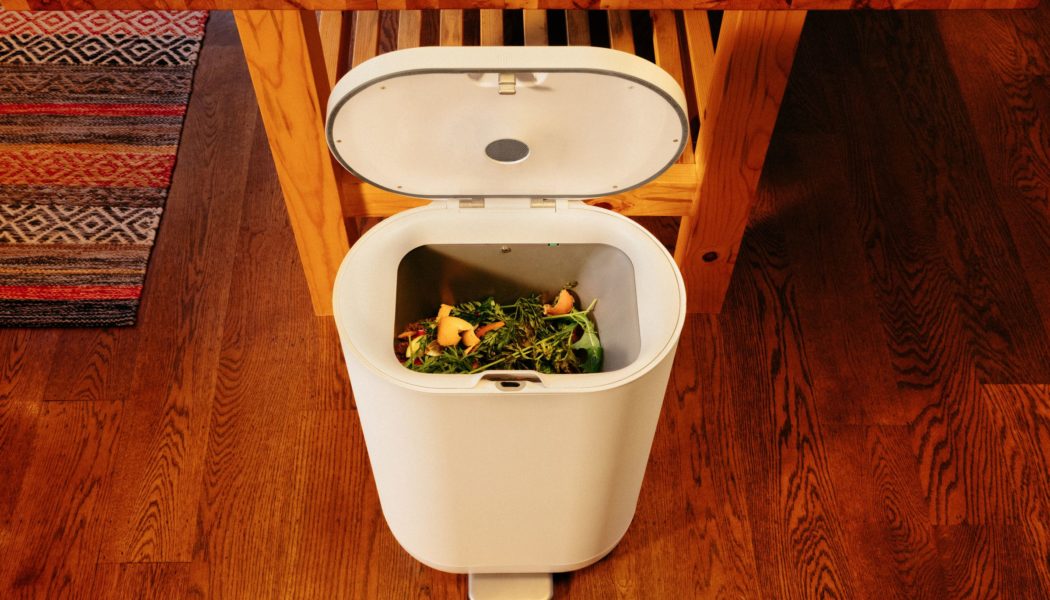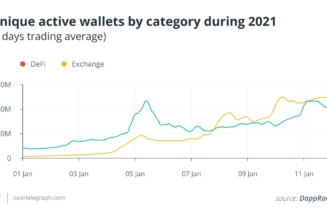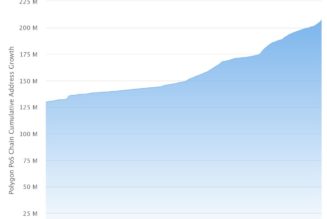A startup with big-name backers wants to make chicken feed out of your food waste.
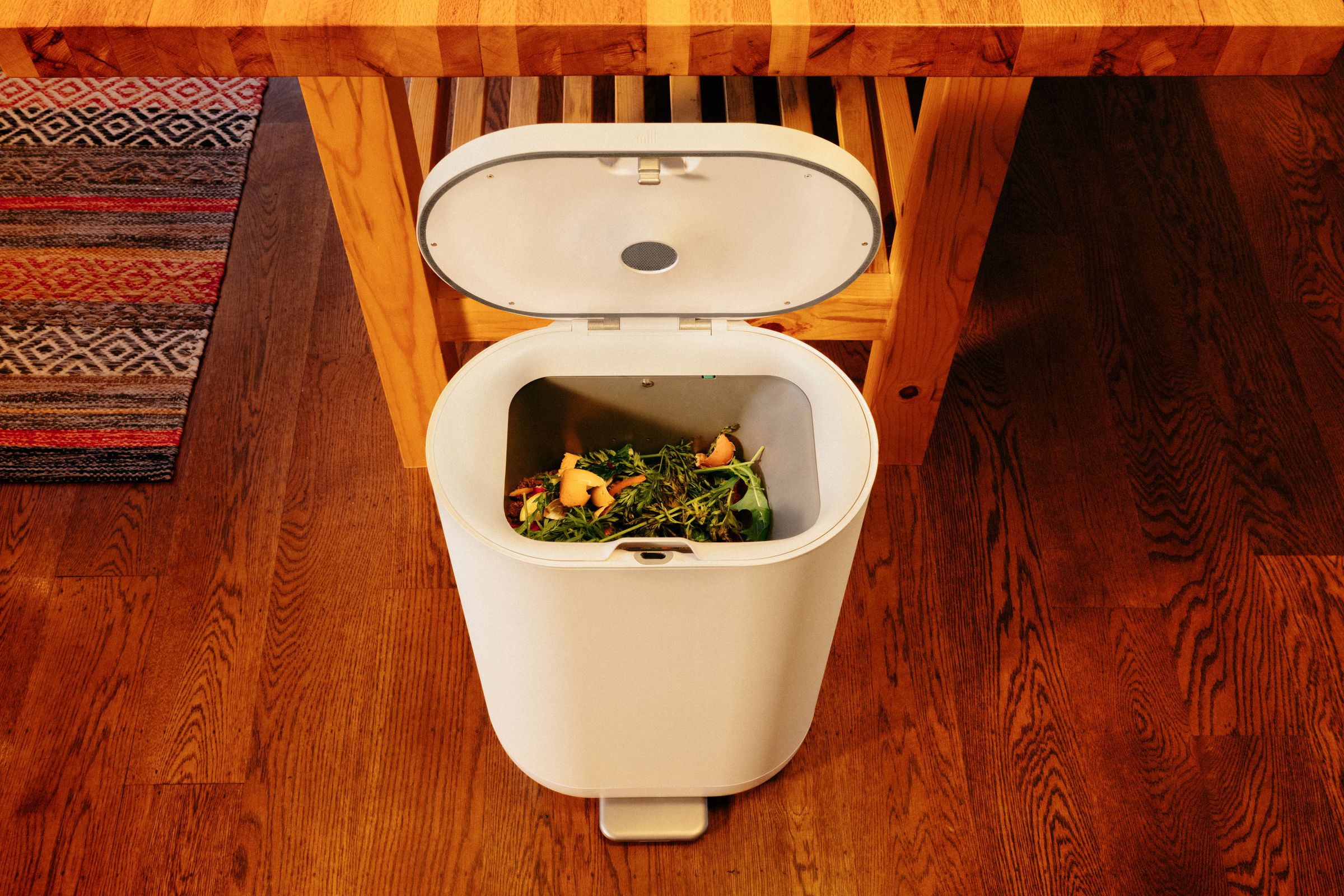
The numbers on food waste are staggering. Globally, about a third of the world’s food production is lost or wasted — roughly 1.3 billion tons each year — and most of it ends up rotting in landfills leaking methane, a greenhouse gas 80 times more potent than carbon dioxide when it first enters the atmosphere.
One way to tackle those problems is to reuse that food waste, turning it into more food. It’s an option that’s even more effective than composting when it comes to tackling climate change, but it’s not always so easy to do at home. So a newly launched startup called Mill Industries wants to change that.
“I just started getting obsessed with waste. It’s like this problem that once you start thinking about it, you kind of can’t stop thinking about it. You just see it everywhere,” Mill president and co-founder Harry Tannenbaum says while wearing a tie-dye T-shirt adorned with a torso-sized smiley face in a video call with The Verge.
Mill emerged from stealth mode last month boasting a roster of tech bigwigs on a quest to create a consumer solution to food waste. Tannenbaum was previously a director at Nest Labs, which aimed to help homes save energy and pollute less using its smart thermostat, and Mill CEO and co-founder Matt Rogers was also co-founder of Nest. Mill has secured funding from big-name backers, including Bill Gates’ Breakthrough Energy Ventures, Chris Sacca’s Lowercarbon Capital, Prelude Ventures, and John Doerr.
Here’s the plan: Mill will send its members a high-tech bin to chuck their leftovers into so that it doesn’t wind up in a landfill. The bin turns those leftovers into food grounds. Members mail those grounds to Mill, which uses it to make chicken feed. The goal is to cut down the billions of tons of greenhouse gas pollution that comes from decomposing waste in landfills and crops grown for animal feed.
In an ideal world, that just might work. The reality is more complex, though. Success depends on members following Mill’s methods to a tee and Mill signing on enough people to make a significant dent in what amount to enormous problems.
To start, Mill has to find consumers willing to put up with (and pay for) an additional waste bin for food scraps instead of throwing them out with the rest of their trash. A lot of waste-conscious people do something similar through composting — separating food waste to let it break down into a nutrient-rich, soil-like product. Composting already helps to keep food out of landfills and doesn’t generate methane when managed carefully. So Mill has to convince people they can do even more for the planet by signing up for its membership, and its answer is an added benefit: that Mill bins essentially turn food scraps into more food.
To put this into context, the Environmental Protection Agency has a “food recovery hierarchy.” It’s an upside-down triangle that ranks different ways to reuse food waste, starting with the most beneficial approaches at the top and the least helpful at the bottom. Composting is near the bottom, right above landfilling. Feeding animals with scraps is a higher priority because it can avoid the downsides of making feed from crops that might use a lot of land, water, and energy.
“Turning [food scraps] into chicken feed will then kind of put it right back into the food system, and so you’re creating a very high-value product. Compost is lovely, but you know, it’s a low-value product,” says Brian Roe, a professor in the Department of Agricultural, Environmental and Development Economics at Ohio State University. “It harkens back to time immemorial, households using scraps to feed livestock at home.”
What Mill is attempting, of course, is a little more complicated. Tannenbaum says the company is still “working through all of the scientific and regulatory processes to ensure that this is a safe and nutritious and extremely delicious ingredient chicken feed.” Mill is also on the hunt for partners to buy its chicken feed.

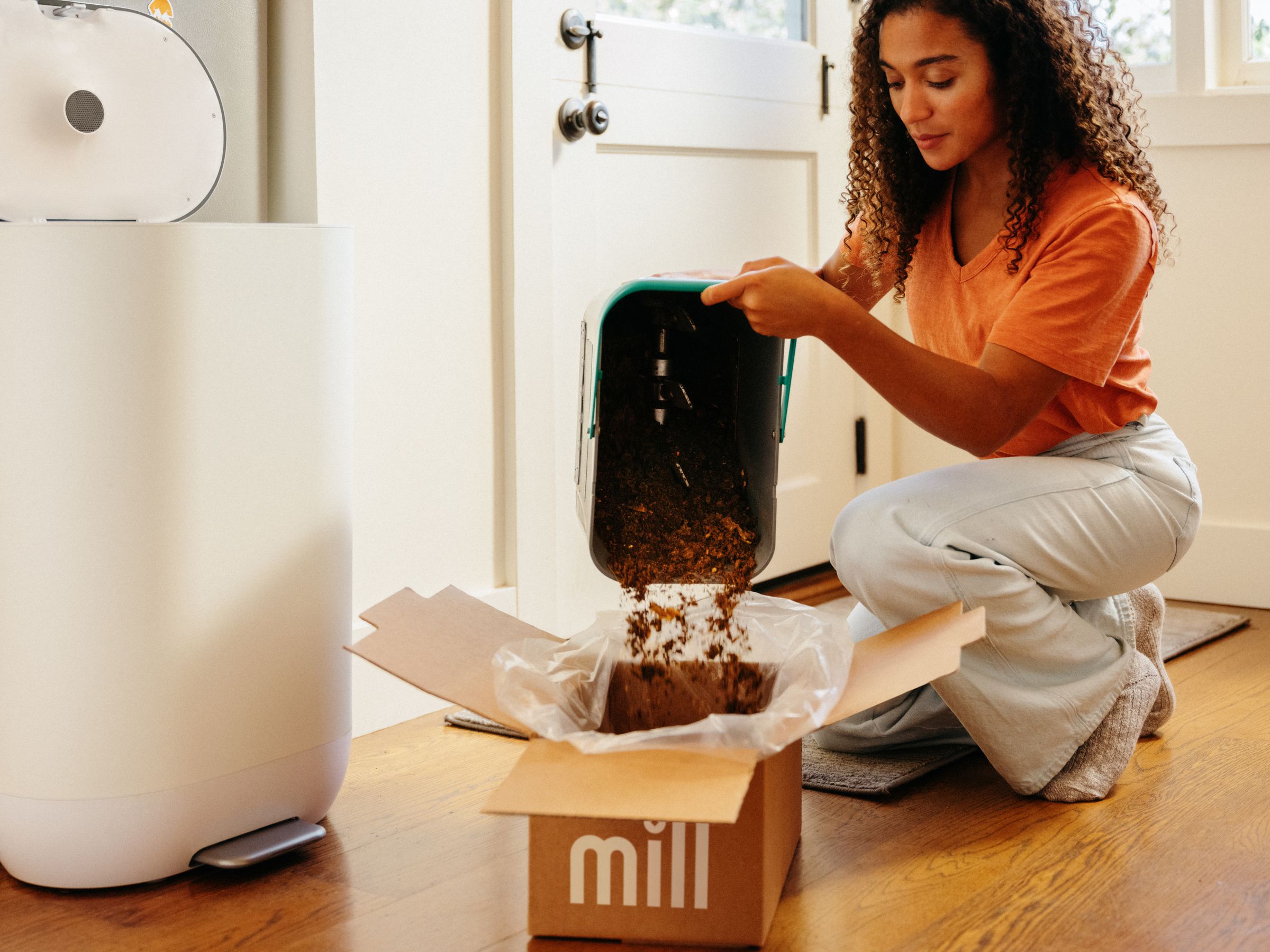
The first step of turning scraps into food grounds, at least, is more straightforward. The bin “dries, shrinks and de-stinks your kitchen scraps overnight,” Mill says. It mimics the look of a typical kitchen trash can with a foot pedal and lid, except it plugs into a power outlet. It can take in plate scrapings, fruits, vegetables, dairy, eggs, and meat (even chicken). Members can keep adding scraps to the bin until it’s full of food grounds that look like fine mulch. Then, they can empty the grounds into a prepaid return box to mail to Mill (the company says it’s partnering with USPS for shipping).
Going through that process can prevent a half-ton of greenhouse gas emissions per household a year, according to a preliminary assessment by Mill. That “life-cycle” assessment attempts to estimate the total impact Mill membership has on the climate. It takes into account the process of making the bin, charcoal filters (to prevent stink), packaging, shipping, the electricity the bin uses, and eventually decommissioning the bins at the end of their life.
The climate pollution from all of that winds up being less than the amount of pollution the scraps would have generated in a landfill and that the resulting chicken feed would have created were it made from scratch instead of trash, according to the analysis. But that’s based on some assumptions of members’ behavior — that they follow through on mailing in a full box of food grounds.
That step isn’t required for membership, but it’s crucial for achieving the environmental impact Mill hopes to have. If members get lazy about mailing in those grinds, they can opt to compost them instead. But that then erases the potential emissions reductions Mill expects from using waste instead of fresh food to make chicken feed. The worst-case scenario is for members to end up tossing their grinds in the garbage to be hauled away to a landfill anyway.
“We’re not doing a benefit if folks are buying our bin and then dumping the grounds into the trash can,” Tannenbaum says.
Nevertheless, maybe the cost of membership is motivation enough for people to mail in those grounds. It’s $33 a month paid annually or $45 for month-to-month payments. That covers the cost of the bin, charcoal filters, food ground shipping, and an app to track your impact. To start, the service will be available in the US, and potential customers can “reserve” a membership online.
Consumer-based fixes for food waste and climate change run into this conundrum. They place responsibility on individuals to fix what are actually systemic problems. There’s a lot that manufacturers and retailers can do to cut down on food waste rather than incentivizing customers to consume more than they need. They might offer smaller packages, for example. And advocates are pushing for standardized expiry labels to minimize confusion on the shelf-life of products.
“The reality is that we are wasting food up and down the food chain everywhere. Consumers and governments are throwing out a lot of money as a result,” says Roni Neff, an associate professor at the Johns Hopkins Bloomberg School of Public Health.
The biggest priority when it comes to preventing food waste — at the top of EPA’s hierarchy — is preventing it in the first place. That’s something that Tannenbaum and experts all told The Verge.
“There will always be something to put in the bin … so there’s always room for this,” Roe says. “But I do hope it doesn’t necessarily detract from people realizing that they could actually reduce the amount of waste that they’re creating as well, which means they would save money rather than having to pay money for a monthly service.”
